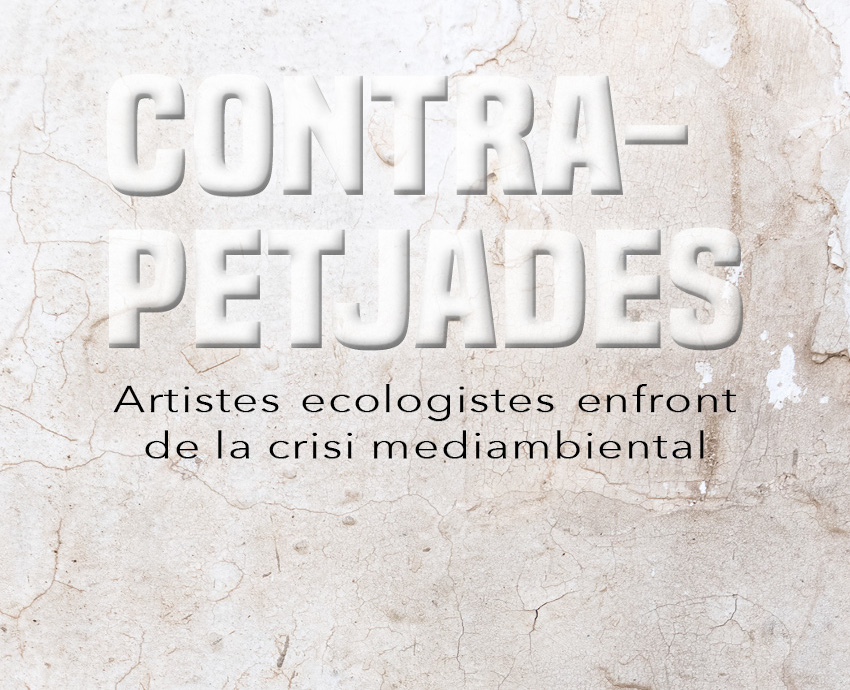
Visit commented by the exhibition curator on November 29 18 h. Registration
Contra-Huellas. Artistas ecologistas frente a la crisis medioambiental (ANTI-FOOTPRINTS – Ecological artists in the face of the environmental crisis) is an unprecedented exhibition that addresses the ecological emergency, with special attention paid to climate change, the loss of biodiversity and pollution. Through art, this exhibition aims to awaken viewers’ critical and active consciences with respect to current environmental challenges. It stems from research on art and ecology within the Valencian Community, which analyses the narratives of artists committed to sustainable aesthetics and ethics and who promote the preservation and recovery of nature through a variety of techniques and approaches.
The exhibition showcases five artists, of which includes Graham Bell Tornado (Aberdeen, 1966), who uses performance, video, music, graphic art, photography and drawing to explore the relationship between biological reality and politics, highlighting themes such as queer ecology and ecotransfeminism. Miriam Martínez Guirao (Elche, 1981) integrates ecology with environmental psychology in her multidisciplinary work. She uses drawing installations and ceramics to raise awareness about the environmental impact of artistic activity. Bea Millón (Sagunto, 1992) questions sociocultural relationships and their sustainability, working with local organisations and different NGOs on collaborative projects. Her work combines action, photography, graphic design and video, riding the line between art and activism from a decolonialist perspective. The work of Marco Ranieri (Milán, 1984) addresses the environment and its inhabitants with found art, giving objects found in the countryside symbolic significance and collective memory. He uses drawing, photography, recordings, sculpture and action to promote an empathetic connection between people and places. In her work, Chiara Sgaramella (Ceriñola, 1982) examines the relationship between natural ecosystems and human society. She addresses the topics of food production and agriculture from a post-disciplinary approach in order to bring critical attention to the factors that alter natural balances.
Contra-Huellas serves as a bridge between art and environmental activism, providing accessible and conscious museum discourse. The pieces in this exhibit use recycled materials and mixed techniques, combining DIY (do it yourself) and DIWO (do it with others) aesthetic with scientific processes and collaborative projects. Beyond raising awareness about the ecological crisis, Contra-Huellas alludes to the concept of carbon offsetting, or compensating for our carbon footprints, emphasising the role of the cultural and artistic world in compensating for CO2 emissions and in promoting a restorative way of thinking. The exhibit hopes to counteract negative discourses and advocate for a more balanced way of living, underscoring the importance of art as a tool for a social and environmental paradigm shift
María Eugenia Rojo Mas
Curator











